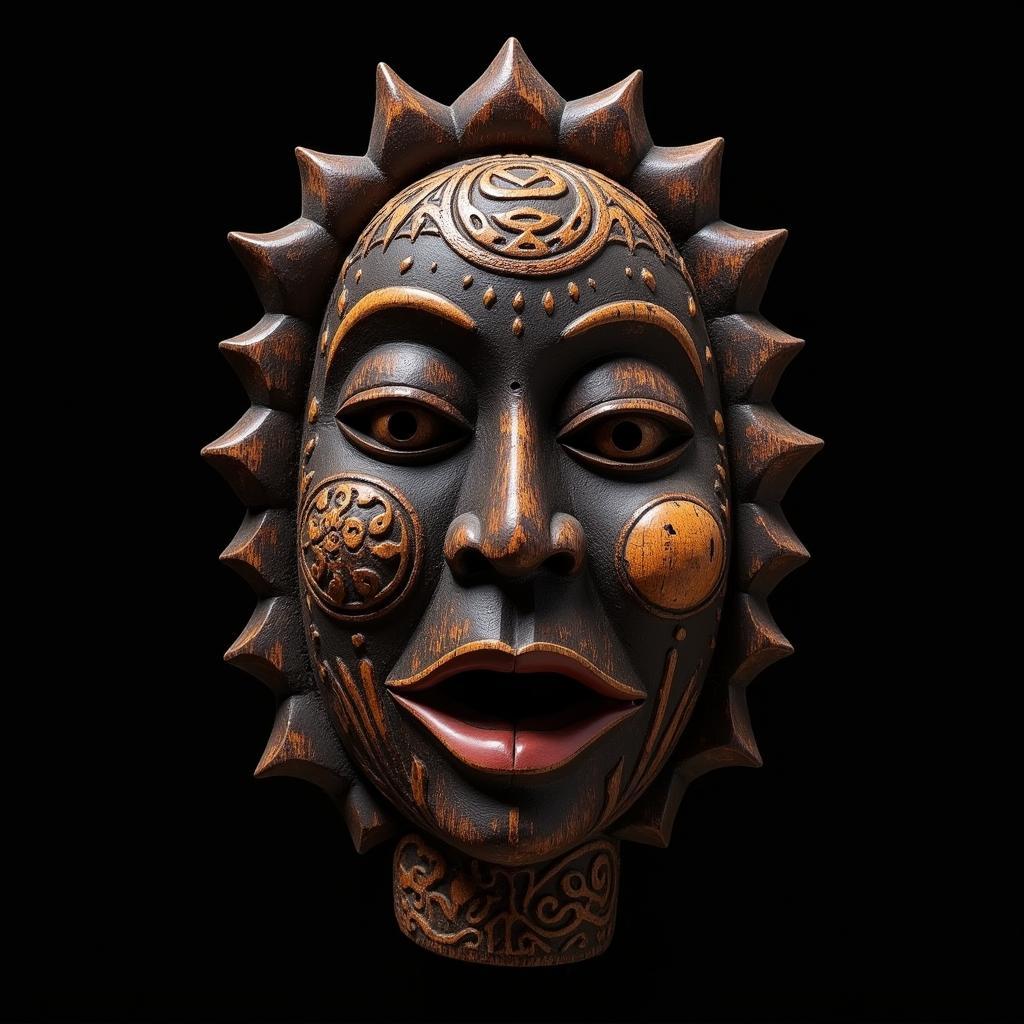The Sun And Moon Mask, a captivating symbol found across various cultures and timelines, continues to intrigue and mystify. This enigmatic image, often depicting the sun and moon in a celestial dance, represents a profound duality – a harmonious balance between opposing forces.
Decoding the Symbolism: What Does the Sun and Moon Mask Represent?
The sun and moon, celestial bodies eternally locked in a cosmic ballet, have long captured human imagination. In the context of the sun and moon mask, these celestial entities transcend their physical forms to embody powerful, abstract concepts.
- Sun: Typically associated with masculine energy, light, warmth, and power. It represents day, consciousness, logic, and reason.
- Moon: Symbolic of feminine energy, darkness, coolness, and mystery. It represents night, intuition, emotions, and the subconscious.
 Tribal Sun and Moon Mask Design
Tribal Sun and Moon Mask Design
Together, the sun and moon on the mask represent the interconnectedness of seemingly opposite forces. This duality extends beyond just gender, encompassing concepts like:
- Light and darkness
- Creation and destruction
- Yin and yang
- Logic and intuition
- Conscious and subconscious
The mask serves as a visual reminder that these forces are not mutually exclusive but rather complementary aspects of a greater whole.
The Sun and Moon Mask Across Cultures
The sun and moon motif, particularly in the form of a mask, can be found across various cultures, each imbuing it with unique interpretations and significance.
Native American Traditions
In many Native American cultures, the sun and moon are revered as deities or powerful spirits. The masks often appear in ceremonial dances and rituals, embodying the spirits and invoking their power. For instance, the Iroquois people believe the sun and moon, represented as a man and woman, chase each other across the sky, their movements dictating day and night.
Ancient Egyptian Mythology
The ancient Egyptians held the sun god Ra and moon god Thoth in high regard. While sun and moon masks weren’t prevalent, the celestial symbolism permeated their art and beliefs. The union of Ra and Thoth represented the balance of opposing forces essential for cosmic order.
Asian Cultures
Across Asian cultures, the sun and moon hold significant philosophical and spiritual value. In Hinduism, the sun god Surya represents life force, while the moon god Chandra symbolizes time and change. Similarly, in Chinese philosophy, the sun and moon embody the yin and yang principle, representing the interconnectedness of all things.
The Enduring Appeal of the Sun and Moon Mask
What makes the sun and moon mask such a captivating and enduring symbol? Perhaps it’s the timeless representation of universal truths. The constant interplay of light and darkness, the ebb and flow of life’s cycles, and the search for balance within ourselves and the world around us are themes that resonate deeply across time and cultures.
The sun and moon mask serves as a poignant reminder of our place within the grand cosmic dance – a dance of duality, balance, and interconnectedness.





